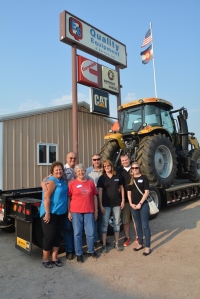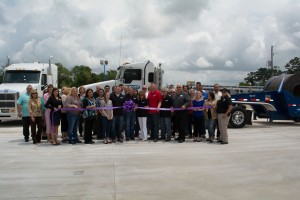For the past couple of decades there has been an increasing amount of interest in supply chains and their management. This has been important, as businesses are facing increasing pressures to find ways to stay, or become, profitable and competitive in the world-wide market. However, it does not take a lot of studying before one realizes that the supply chain is really more like a supply web.
Chains imply linear connections, one link attaching seamlessly to another, stretching to join the spectrum of work. Put together in a neat and tidy line that, as a concept, can be taught to the broad market with text, formulas and theories. What we find outside of textbooks, though, is that many links in the chain can actually branch off to multiple strands and lead to different steps, in potentially different directions. Some of the strands can turn into loops, and others continue to branch off in even more directions. The more suppliers, distribution points, parts or components, and finished products that are involved, the more complex the supply web can become.
As a concept, the idea of a supply chain is a great way to teach general principles – just like elementary school children learn about food chains in school; the aquatic larvae eats the algae, the bluegill eats the larvae, the bass eats the bluegill, etc. But, when the kids get older and take an actual biology class, they learn that the food chain is really a food web, and lots of different critters eat those aquatic larvae, and the bass actually feeds on more than just bluegill. The supply chain is really the same idea – the more you learn, the more you realize that businesses have a variety of different appetites, and multiple layers of the business pyramid are often competing for the same sources of resources and income.
So…where does one start, when trying to figure out your own business’s supply web? The task may seem daunting, but often the best approach is similar to how a spider approaches the job of building its own web; one strand at a time. Whether starting with a customer and working backward through the steps that lead to a completed transaction, or starting with a product and working upstream through the component processes and downstream to final sale, or beginning with a raw material and following its full lifecycle to completion and sale, the most important thing is to capture all of the steps, as completely as possible, in the entire process. Done correctly, every touch point, movement, location and transaction should be mapped out.
When the entire web is mapped, interesting things begin to occur. The first observation is usually an impression of awe, when one sees how big a supply web can actually be. Once the shock of complexity starts to wear off, one may start to see trends or patterns in the flow of processes. Clusters of work will become evident, as will areas of increased action and interaction. Usually, a few gaps will be found, and those will have to be re-visited to insure that the web is as complete as possible.
Now, once everything is all laid out in the open, one can start to identify the first areas for study. Many of these areas will become self-evident, as re-work loops and duplications of tasks tend to stand out from more linear activities. These areas will demand scrutiny and, if errors in the process look to be causing extra work, they will most likely be the target of root cause analysis studies and process improvement plans.
Other observations that may become apparent are areas of opportunity. Looking across the web, the possibilities of developing synergies between connected groups and the combination of tasks may begin to take shape. It may be discovered that duplicate processes are being executed by different groups, unaware that the same exercise may be happening in the next building over, or perhaps just down the hallway. The big picture view brings these events into focus and creates an awareness of what may be possible to improve with very little effort. This is especially true for those that expand the view of their supply web to include activities that fall farther upstream and downstream of what their business has actual control over.
It may be tempting to only map part of the supply web, due to the overwhelming nature of the task, and this might be appropriate for very complex business models. However, the decision to break the web down into a smaller part should only be done as a strategy to “eat the elephant” in pieces. As soon as that smaller section is completed, the next section needs to be worked on and completed, and so on, until all of the different smaller sections are mapped. Then all of the smaller sections need to be tied in together to get a truer idea of the big picture. If decisions that affect a microcosm of the supply web are made without an understanding of the big picture, it could lead to the formation of new and bigger problems.
Complex supply webs can be strange creations and when one only looks at a single, siloed, part of the overall picture – and tries to optimize only that part – it can cause upstream, or downstream, effects that are detrimental to the overall goals of a company. That is what often leads to the lament, “we saved a nickel, but it looks like it is going to cost us a dime!” It is important that, when decisions are made to alter and improve the supply web, one fully understands all of the ramifications of that change and the ripple effects that can lead to unintended consequences.
Now that your supply web is documented, we can start the next phase of the improvement process: Identification and prioritization of improvement tasks. But that is a topic for another day….



